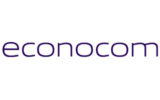How can we reduce the environmental impact of IoT projects?
While connected objects and the related applications can help make operational, economic and/or environmental gains in certain cases, the environmental impact of using them is far from neutral. A complete life cycle analysis (LCA) of IoT projects to measure their environmental balance remains the most effective way to make sure that the expected gains are fulfilled.
Impact on the environment: connected objects both “judge and jury”
In the space of a few years, connected objects have become widespread in a number of sectors (data centers, home automation, supply chain, industrial sites, water networks, etc.) for the value-added services they provide. They are used to measure and track indicators in order to create value and optimize operational processes (proactive alerts, anticipating breakdowns, smart diagnoses, etc.) but also to reduce the impact on the environment (control the consumption of energy, water, primary resources, reduce waste, etc.).
However, if we take into account their full life cycle, connected objects are also a source of environmental impact, especially due to their on-board electronics and their connection pathways to telecommunications networks. The life-cycle analysis (LCA) of these IoT objects, from the energy and non-energy raw materials needed to manufacture, transport, distribute, and utilize them, all the way through to their end of life (electronic waste), demonstrates that the manufacturing phase clearly has the most significant impact on the environment (in particular due to the use of rare earth metals).
Additionally, these objects have a highly variable lifespan of between one to ten years, the lifespan of the “sensor” being directly linked to the lifespan of the device to which is it associated.
The environmental balance of a project: separating the objective from the execution
In light of this, any IoT project that seeks to optimize a process or to reduce the environmental impact of any process should take its global environmental impact into account. For this, you should measure the potential gains from optimizing the process concerned (avoided impacts) against the environmental costs for the entire life cycle of the connected objects needed to achieve these gains (generated impacts).
This is calculating a project’s environmental balance. If there is a significantly positive balance (e.g. with a final impact on the environment), the point is not to abandon the project, but rather to find the right eco-design solutions or levers so that the digital services that these connected objects offer are as frugal as possible. This way, you can achieve a negative environmental balance, e.g. one that concretely “avoids” impact on the environment.
In other words, an end-to-end life cycle analysis for an IoT project leads to projects that are truly effective from both an operational performance and environmental standpoint, built on results that can be proven, and avoid any potential “green washing” approaches.
What action can we take to reduce the environmental impact of IoT projects?
There are several things you can do to reduce an IoT project’s environmental impact. A frugal IoT project begins with work on the devices themselves. On the one hand, with eco-design work on the devices to improve durability: materials that are energy- and resource-efficient, optimized batteries, etc., and, on the other hand, by optimizing the number of communicating objects. It is generally more efficient to deploy a restricted number of smarter and more robust objects than a multitude of objects that just report data.
Also in terms of deployment, it is essential that the volume of connected objects suits the needs over time. In other words, are the sensors stuck in place for an undetermined period of time, or can they be “recycled” in other projects?
Finally, to reduce IoT projects’ environmental impact, the centralized part of the solution must also be optimized. It must be designed to collect, process, report and store information at an appropriate size for projects’ specific needs.
To conclude, given the profusion of IoT projects for both personal and professional use, it is essential to integrate environmental issues right from the design stage of digital services to avoid a massive dispersal of electronic devices. These devices require resources and have impacts at every stage of their life cycle.























